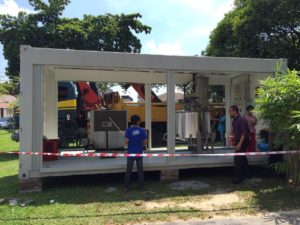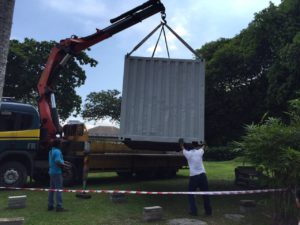



 http://nanomite.utm.my/?Resources
http://nanomite.utm.my/?Resources
NanoMITe Presentation, 26 September 2013 NanoMITe was proposed by MoE under the GSIAC program and was presented and approved by the GSIAC committee led by YAB Prime Minister Dato’ Sri Najib Razak on 26 September 2013 in New York, USA.
NanoMITe is a global research consortium consisting of over 100 top-level scientists of world-class academic institutions and centers of excellence from United States, Germany, Canada, China and Malaysia with extensive expertise in the field.
In order to meet the increasing energy demand and objectives of Malaysia Energy Policy, scientific research on a reliable and affordable fuel mix in renewable energy such as solar, fuel cells and biofuel is needed to provide energy that enables economic growth and societal advancements. The proposed program aims to contribute significantly to the GNI of Malaysia in three energy domains of nanotechnology:
- Low temperature solid-oxide fuel cells (SOFC) for power industry
- Flexible dye-sensitized solar cells (DSSC): printed solar cells for an economically viable, clean renewable energy
- Second generation catalytic pyrolisis conversion of palm oil EFB biomass to jet fuel. All the projects provides solutions to be developed by molecular manipulation at the nano scale using novel local nano materials, catalysts, process and technology.
The global energy demands will increase to around 35 percent from 2010 to 2040. The continuing increase of world energy consumption and associated problems (natural energy resources depletion, carbon dioxide emissions, global warming, and energy security issue, etc.) make spare and efficient use of energy a cornerstone of energy policies of all economies. Increasing energy production in attempts to meet energy security needs can be substituted, fully or partly, by increasing energy efficiency. According to the International Energy Agency, improved energy efficiency in buildings, industrial processes and transportation could reduce the world’s energy needs in 2050 by one third, and help control global emissions of greenhouse gases. The 2010 APEC Growth Strategy and 2011 Leaders’ Declaration recognized that the development of nanotechnology could significantly contribute to reduce aggregate energy intensity by 45 percent by 2035.



